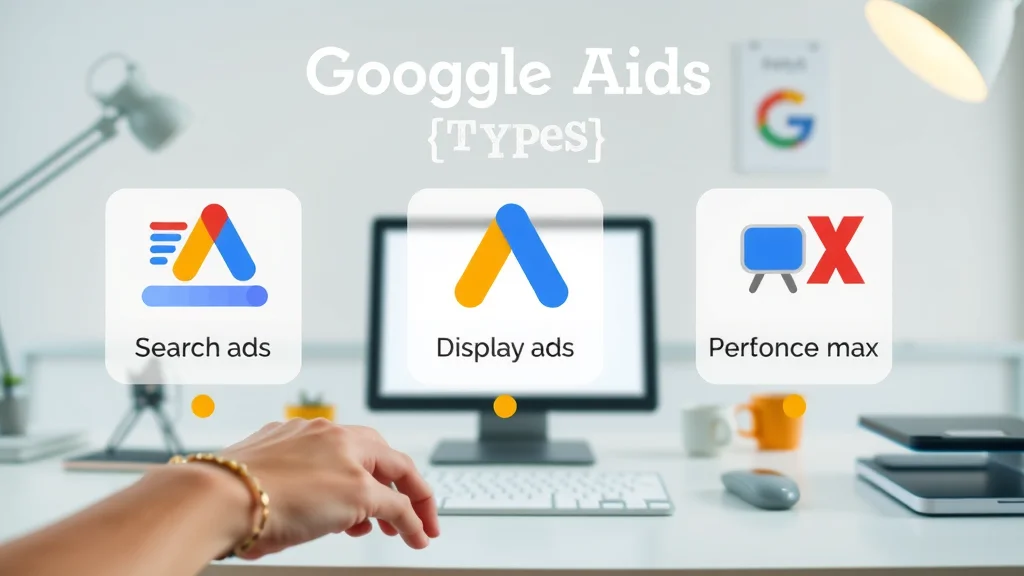Did you know that a staggering 76% of digital ad budgets are wasted on poorly structured campaigns? Most new advertisers pour money into their first google ads campaign and walk away disappointed—simply because they skip crucial setup details. But with a clear, practical roadmap, you can avoid these costly pitfalls, ensure every dollar stretches further, and see real returns faster. In this comprehensive guide, you’ll discover the proven process for launching your first Google Ads campaign, avoiding rookie mistakes, and setting yourself up for ongoing success in 2024.
Unlocking Success: Why Your First Google Ads Campaign Matters
- Startling statistics: 76% of budget is wasted on poorly structured campaigns.
- How a well-planned google ads campaign can make or break ROI.
- Why even small businesses should prioritize their first google ads campaign setup.
‘The difference between a wasted dollar and a successful campaign lies in the details you set up on day one.’

What You’ll Learn About Launching a First Google Ads Campaign
- The foundations of a successful google ads campaign
- Common mistakes to avoid for first-time advertisers
- How to optimize your budget and track conversions efficiently
- The latest strategies for google ad setup in 2024
A Brief History: When Was the First Google Ad?
The Origins of Google Ads and Its Evolution
The journey of Google Ads began back in October 2000 with the introduction of Google AdWords, the predecessor to today’s powerful platform for digital advertising. In its earliest form, Google AdWords allowed businesses to place searchable text ads next to search results, letting small and large brands connect directly with users as they browsed Google search. Over the years, Google Ads has dramatically evolved, introducing new campaign types—from highly targeted search campaigns to the all-encompassing Performance Max. Today, launching your first google ads campaign means choosing between smart automation, video ads, and machine learning-powered placements—all built on the legacy of making advertising accessible for every budget and product.
| Year | Milestone |
|---|---|
| 2000 | First Google Ad (AdWords): Text ads alongside Google search results |
| 2005 | Ad Group and campaign structure introduced, allowing multiple campaigns in one account |
| 2010 | Introduction of remarketing and conversion tracking |
| 2018 | Google AdWords rebranded to Google Ads, modern interface launched |
| 2021 | Performance Max campaigns roll out: unified automation across all Google networks |

How Has Google Ads Shaped Online Advertising?
Since debuting as Google AdWords, Google Ads has completely revolutionized the way businesses reach their customers. By enabling advertisers to bid on keywords and show ads alongside relevant search queries and content, Google Ads changed digital marketing from broad, untargeted messaging into precision-driven outreach. Small startups and global brands alike could access their ideal customers based on intent—what people searched, browsed, or even watched. With features like ad groups, conversion tracking, and advanced analytics, the entire ads campaign landscape matured, prioritizing ROI over mere impressions. In today’s market, launching your first google ads campaign means tapping into a machine learning-powered ecosystem that optimizes for your goals in real time, continually refining itself for maximum efficiency.
‘Google Ads revolutionized digital marketing and made targeted advertising accessible for all sizes of business.’
Understanding Google Ads: Key Concepts Before You Create Your First Campaign
How Do Google Ads Campaigns Work?
Running your first google ads campaign starts with understanding the framework behind Google Ads. At its core, a google ads account is where you manage ad groups, keywords, budgets, and campaign settings. There are several types of campaigns to choose from, including search ads (text ads shown alongside Google search results), display ads (banner or image ads shown on partner websites), and the increasingly popular Performance Max campaigns—which use machine learning to show ads across Google’s entire suite, including YouTube and Gmail. Setting up effective conversion tracking from the start ensures you're measuring what matters: real actions like purchases or signups. This foundational knowledge guides critical budget and targeting decisions, helping you craft a smarter first Google Ads campaign that avoids wasted spend and delivers on your business goals.
- What is a google ads account?
- Difference between search ads, display ads, and performance max campaigns
- Role of conversion tracking for your first google ads campaign

Preparing for Success: Setting Up Your Google Ads Account
- Creating your first google ads account step-by-step
- Important settings for google ads first-timers
- Best practices for structuring your ads account
Getting your google ads account off to the right start is key. First, visit ads.google.com and sign in or create a new Google account. Carefully follow the prompts to set up your business information, billing details, and time zone settings. Don’t rush here—accuracy matters! Next, establish clear ad groups to separate products or services into logical clusters so that your ads are tightly targeted. Remember, proper campaign structure means you can monitor campaign performance efficiently and make quick adjustments. Set strong admin controls to ensure account security (especially if you share access with team members). Ultimately, the goal is to build an ads account that supports growth, scales easily, and prevents common setup errors in your first google ads campaign.
Step-by-Step: How to Set Up Your First Google Ads Campaign
Goal Selection for Your First Google Ads Campaign
Every successful first google ads campaign starts with a crystal-clear goal. Are you aiming to drive website visits, gather leads, or increase e-commerce sales? Choosing the right objective helps Google’s machine learning optimize for what matters most to your business. Set achievable milestones for your initial campaign—think 100 website visits, 5 sign-ups, or a set number of product sales. This approach guides every other decision, from audience targeting to ad group structure. When you’re ready to create your ads campaign, select your campaign objective inside your google ads account and confirm it aligns with your intended outcome.
Choosing Campaign Type: Google Search vs. Performance Max
New advertisers are often faced with an early decision: should your first google ads campaign be a traditional Google Search campaign, targeting keywords on search results, or a Performance Max campaign that leverages all of Google’s networks using automation? Search campaigns shine when intent is clear—users are actively looking for products or services. Meanwhile, Performance Max campaigns can broaden reach and use machine learning to drive conversions across search, display, YouTube, and Gmail. Consider starting with a search campaign for full control and transparency, then test Performance Max for scale once you’re comfortable with the basics. Both campaign types have their strengths, and experimenting early is a crucial part of learning.
Keyword Research and Targeting Techniques
Smart keyword research is the heart of an efficient first google ads campaign. Start by brainstorming phrases your ideal customers use—these search terms are what will trigger your ads. Use Google’s built-in Keyword Planner to estimate search volume, competition, and expected cost-per-click (CPC) for each keyword. Group similar keywords into logical ad groups for higher quality score and better ad relevance. Don’t forget negative keywords—these block irrelevant queries, ensuring your budget isn’t wasted on searches unlikely to convert. Analyze the search results for your chosen terms and look at what competitors are bidding on. Regularly refine your keyword lists for every ads campaign, learning from real data inside your google ads account.
Compelling Ad Copywriting for High CTR
Writing compelling ads is vital for increasing your campaign’s click-through rate (CTR) and attracting qualified traffic with your first google ads campaign. Your ad copy should highlight what sets your products or services apart, use power words, and include a strong call to action—for example, “Shop Now,” “Get a Free Quote,” or “Book Today.” Experiment with multiple ad variations (ad groups) to see which message resonates best. Make sure your headlines include your target keyword and directly address user intent based on the original search query. Always follow Google Ads guidelines for ad length and policies to prevent disapproval. Monitoring CTR from the outset gives you actionable feedback to refine your ads campaign messaging.

Setting Your First Budget: Is $20 a Day Good for Google Ads?
A common question among beginners: is $20 a day a good starting point for a first google ads campaign? In most cases, yes. With a focused campaign—targeting high-intent keywords and a clear audience—you can generate meaningful data, test performance, and control spend. Calculate your expected cost-per-click (CPC) using Keyword Planner, and set daily and campaign budgets accordingly. Setting a conservative cap ensures you don’t accidentally overspend while learning. As your ads campaign starts driving results, review your metrics regularly in your google ads account and increase your budget only as return on investment (ROI) improves.
- Budgeting tips for google ads campaign beginners
- Calculating cost-per-click (CPC) for your first google ads campaign
- Setting spending limits to avoid waste
| Daily Budget | Estimated Clicks/Day | Monthly Spend | When to Scale |
|---|---|---|---|
| $10 | 10-20 | $300 | After first 20 conversions |
| $20 | 20-40 | $600 | After consistent conversions & stable cost per conversion |
| $50 | 50-100 | $1,500 | When campaign hits ROI targets |
Adding Conversion Tracking from Day One
Effective conversion tracking is non-negotiable for any first google ads campaign. Setting it up ensures you’re not just guessing about performance—you’ll know exactly which keywords, ad groups, and campaigns are producing sales, leads, or other valuable actions. Connect Google Analytics or set up conversion actions in your google ads account for web forms, product purchases, phone calls, or downloads. Double-check your tags to verify conversions are being measured accurately. This data enables optimization and prevents wasted ad spend, allowing you to double down on what works while reducing investment in underperformers.
Optimizing Your First Google Ads Campaign for Maximum Return
Performance Monitoring: Analyzing Key Google Ads Metrics
- CTR, Quality Score, and Conversion Rate Essentials
- What to do with underperforming keywords in your first google ads campaign
- How to adjust bids for better results
Launching your first google ads campaign is just the beginning—ongoing optimization is where the real value emerges. Monitor your key campaign metrics in your ads account dashboard, focusing on CTR (click-through rate), quality score (Google’s measure of your ads’ relevance), and conversion rate. If certain keywords or ad groups are underperforming, lower bids, pause them, or swap in new alternatives. Incrementally adjust bids to find the sweet spot between cost and visibility. Use search term reports to identify negative keywords that waste budget. This iterative approach is essential for driving higher ROI and sustaining campaign performance over time.

| Metric | What It Means | Optimization Tip |
|---|---|---|
| CTR (Click-Through Rate) | Percentage of ad views leading to clicks | Refine ad copy and extend negative keywords |
| Quality Score | Google’s measure of ad/account relevance | Improve landing page and ad relevance |
| Conversion Rate | Proportion of clicks that turn into conversions | Test landing pages and offers for best results |
| Cost Per Conversion | Total ad spend divided by number of conversions | Bid on high-performing search terms |
Avoiding Common Mistakes During Your First Google Ads Campaign
- Top errors new advertisers make when starting a google ads campaign
- How to ensure your google search and ads account are secure
- Reinvesting early learnings into future campaigns
Many first-time advertisers fall into the trap of setting and forgetting their ads campaign—but the digital landscape rewards those who learn and adapt. Common mistakes include using too many broad keywords, neglecting ad group structure, forgetting to use negative keywords, and not setting up conversion tracking from the start. Security is also key—regularly review account permissions, enable multi-factor authentication, and monitor sign-in alerts in your google ads account. Always take time at the end of each campaign to analyze results, document insights, and refine your approach. Reinvest these learnings into future ads campaigns for consistent growth.

People Also Ask: Quick Answers for First-Time Advertisers
When was the first Google ad?
- Answer: The first Google ad appeared in October 2000 as Google AdWords, the precursor to today’s Google Ads platform.
How to set up the first Google Ads campaign?
- Answer: Begin by creating a google ads account, setting objectives, choosing the right campaign type, conducting keyword research, creating compelling ad copy, selecting your budget, and tracking conversions.
Is $20 a day good for Google Ads?
- Answer: $20/day is suitable for testing your first google ads campaign, especially if targeting a focused audience and keywords. Monitor results and scale as performance improves.
How much do Google Ads pay per 1,000 views?
- Answer: Average cost per thousand impressions (CPM) varies, but for google ads search campaigns, expect $1–$5 per 1,000 views depending on industry and targeting.
Expert Tips: Making the Most of Your First Google Ads Campaign
- Test multiple ad variations
- Use negative keywords to avoid irrelevant clicks
- Check your conversion tracking regularly
- Adjust bidding based on data
- Review search terms to find new opportunities
‘Your first google ads campaign is your biggest teacher. Stay curious and keep tweaking!’
Frequently Asked Questions: Your First Google Ads Campaign
-
What’s the fastest way to get results from my first google ads campaign?
Focus on a narrow keyword set, use clear goals, and monitor your ads closely. Rapidly optimize based on data for the best early returns. -
How can I measure success in my ads account?
Use metrics like conversion rate, cost per conversion, and ROI. Regularly analyze these in your google ads account dashboard to track performance. -
What are the top resources for learning about google ads campaign management?
Explore Google’s Skillshop, YouTube tutorials by Google Ads experts, and case studies on the official Google Ads blog.
Key Takeaways for Launching Your First Google Ads Campaign
- Focus on a clear goal for your first google ads campaign
- Monitor results daily in your google ads account
- Optimize your google ad structure for efficiency
- Never stop testing and learning from each ads campaign
Ready to Succeed? Book a Free Consultation or Text Us 720.892.5968
Conclusion: Your first google ads campaign can be a powerful business growth engine if set up and managed carefully. Take action now to maximize every advertising dollar. Start smarter, optimize continuously, and let your results do the talking.
 Add Row
Add Row  Add
Add 




Write A Comment